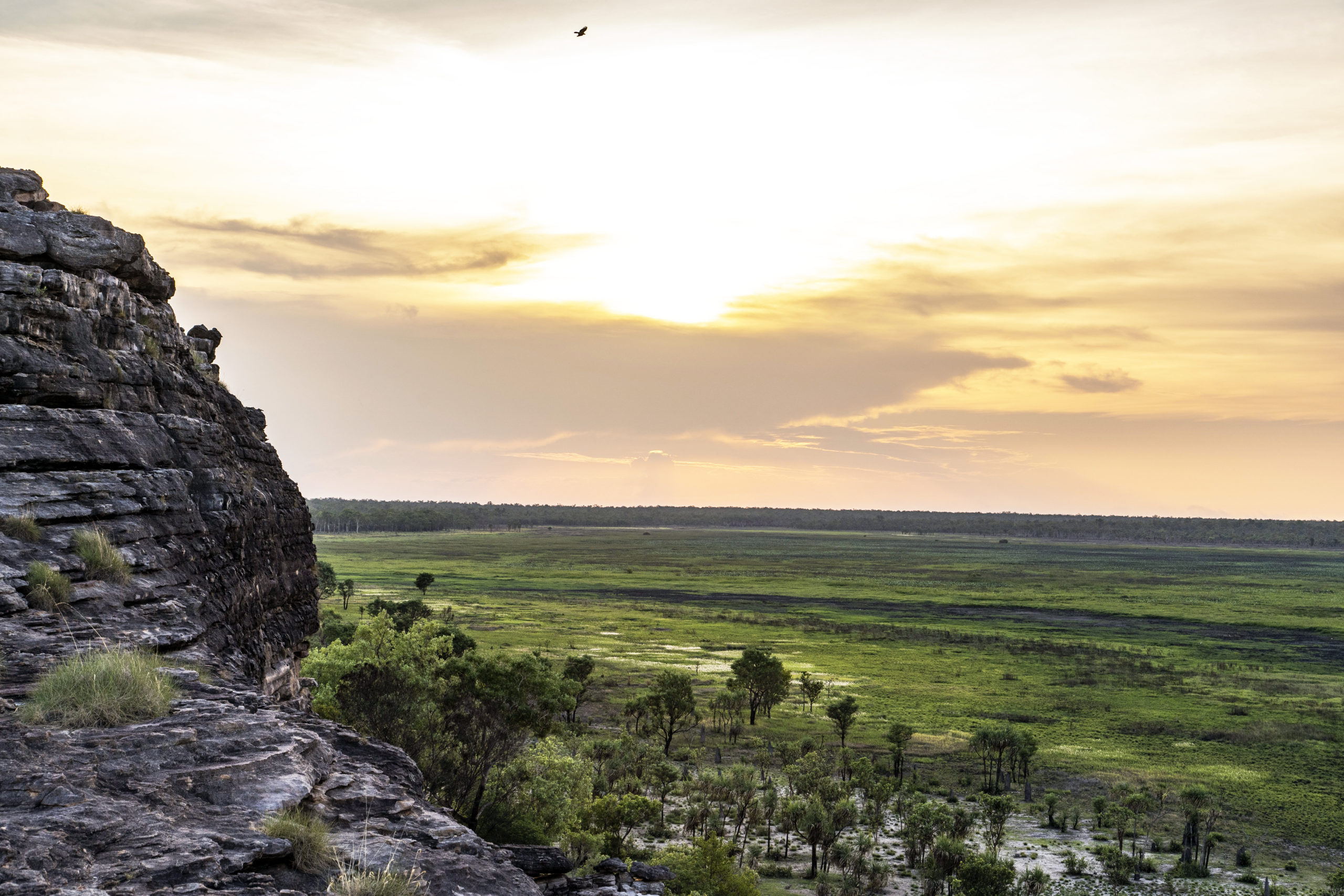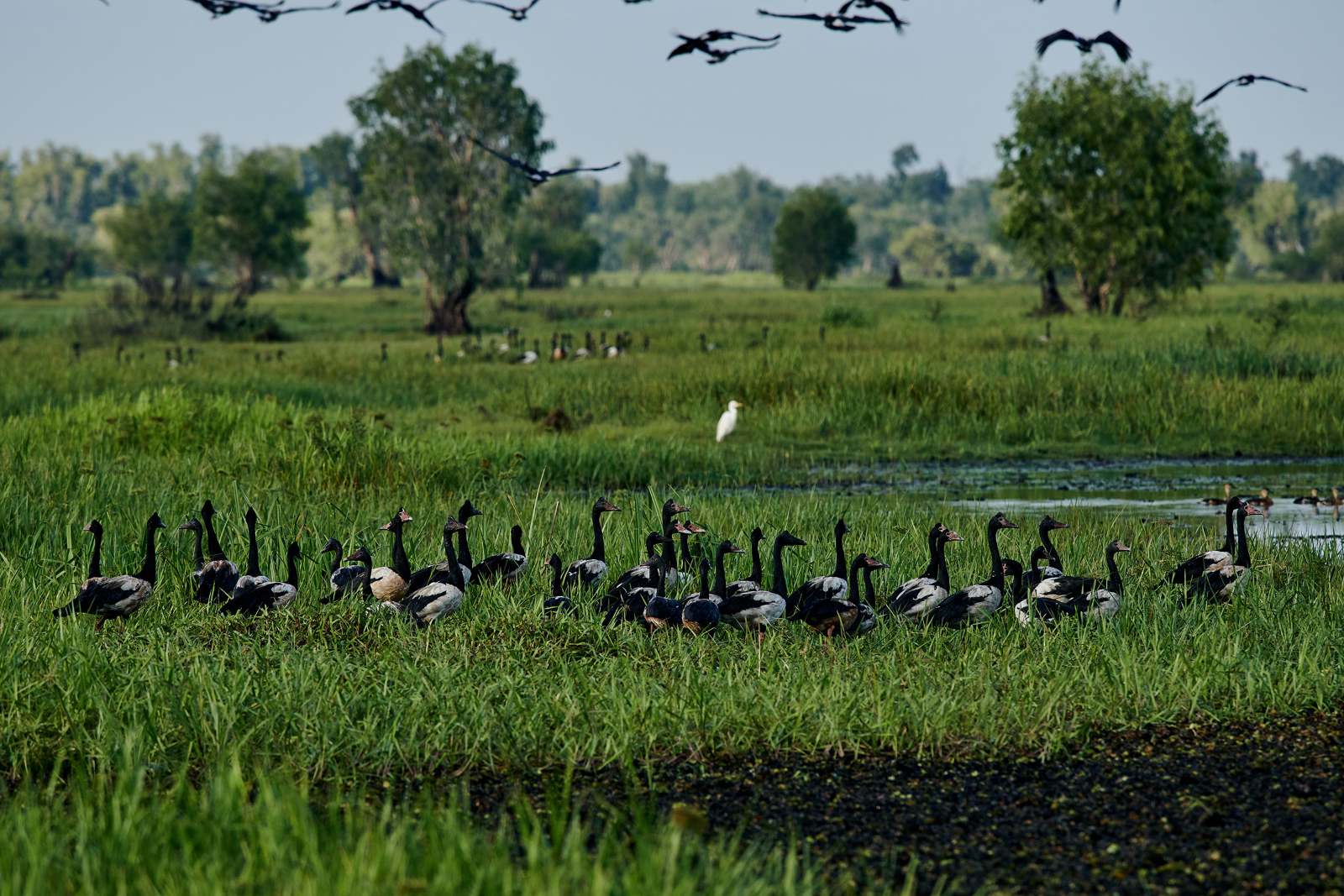1 March 2021
Authors: Dr Viki Cramer, Northern Australia Environmental Resources Hub, and Dr Cathy Robinson (project leader), CSIRO
Something for our grandkids’ future: Para Grass control on the Nardab floodplain
A research collaboration between Traditional Owners and scientists in Kakadu National Park is pushing back para grass and bringing back bush foods to the park’s Ramsar-listed floodplains.
When Mr Simon Dempsey looks out across the Nardab floodplain in Kakadu National Park he sees more than a wetland: he sees his country and his grandchildren’s future. For Simon, a Bunitj Traditional Owner and Kakadu ranger, the floodplain is the front door to a grocery shop where his grandkids can hunt for Magpie Geese and collect turtle eggs, just as he had done for much of his life.

Looking out over Nardab floodplain in Kakadu. Photo: NESP Northern Hub.
But the choking spread of invasive Para Grass (Urochloa mutica) across the floodplain threatened to destroy this future. The thick, waist-high grass was blocking access to his family’s turtle-hunting grounds. Magpie Geese found it difficult to nest in the dense mass of vegetation and para grass provided less nutrition to their goslings than a diet of native grasses. Simon began to fear that if nothing could be done to stop its spread then ‘Kakadu won’t be left’.
Since the late 1960s, when it was first trialled as a pasture grass in the east and west of Kakadu, Para Grass has spread to cover 3,200 hectares of the park’s floodplain. Apart from its impact on bush foods, Para Grass causes hotter fires that can kill paperbark woodlands and rainforest.
A collaboration between Bininj/Mungguy Traditional Owners and researchers from the national science agency CSIRO, Microsoft, Parks Australia, The University of Western Australia and Charles Darwin University, led by Dr Cathy Robinson, has been using Indigenous healthy country indicators and Indigenous-led Artificial Intelligence (AI) to map and manage the current extent of Para Grass. The research is funded by the Australian Government’s National Environmental Science Program.

Magpie Geese in Kakadu. Photo: Microsoft.
The researchers found that using Indigenous knowledge and AI to monitor and manage the spread of Para Grass leads to innovative and effective joint management solutions. This Indigenous-led research showed that Para Grass invades areas that Bininj identify as the best habitat for turtles and Magpie Geese. Spraying these high-priority areas led to a rapid recovery of turtles and geese, and improved access to hunting sites – factors that Bininj decided were important indicators of healthy country and the success of Para Grass control.
It can be hard work spraying para grass in 40-degree heat and a haze of flies. But the Indigenous and scientific monitoring of the wetland has shown joint managers where and why weed spraying is having a positive effect.
Simon Dempsey is optimistic this Indigenous-led approach to wetland management is positive for joint management and to his grandkids’ future.
It gives us purpose to basically get out there and do it.
– Mr Simon Dempsey
Want to know more about the Resilient Landscapes Hub's activities and our research into practical solutions to environmental problems? Stay informed about activities, research, publications, events and more through the Hub newsletter.
"*" indicates required fields